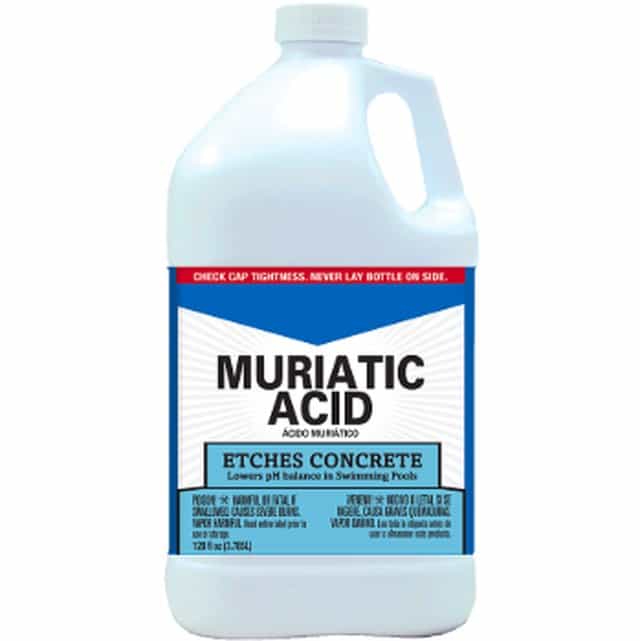Garage doors are a necessary tool for avoiding external attacks and ensuring security. However, with long use, any metal can get cracks and eventually, break off. And in any case, where you do not have a skilled expert close by to help fix the door, what do you do? This is why it becomes pertinent for everyone to learn how to repair a garage door.
I mean, things happen, and it can happen any day. The best you can do is to be armed and prepared for the moment.
This article hence, gives you a step-by-step guide to fixing a garage door and a simple strategy for identifying the different components of a door.
Table of contents
Components of a Door
A garage door has several components that work together to open and close it. Here are the primary components of a garage door:
Springs
Garage door springs are the most critical component of a garage door. They are responsible for lifting the weight of the door. There are two types of garage door springs: torsion springs and extension springs.
Torsion springs are located above the door, while extension springs are located on either side of the door.
Tracks
The tracks are the metal rails that the garage door rollers ride on. They are usually made of steel and come in different lengths and sizes. The tracks are attached to the wall and ceiling of the garage.
Rollers
The rollers are the wheels that ride on the tracks. They are usually made of nylon or steel and come in different sizes. Rollers are responsible for moving the garage door up and down the tracks.
Hinges
The hinges are the parts that connect the garage door panels. They allow the door to bend as it moves up and down the tracks. Hinges are usually made of steel and come in different sizes.
Cables
The cables are responsible for lifting the garage door. They are attached to the bottom of the door and the springs. Cables are usually made of steel and come in different lengths.
Opener
The opener is the motor that opens and closes the garage door. It is usually mounted on the ceiling of the garage. The opener is connected to the door with a track and a trolley.
Understanding these components helps you better equipped to diagnose and repair any problems with your garage door.
Common Garage Door Problems
Garage doors are an essential part of any home, and they need to function correctly to ensure the safety and security of your property. However, like any other mechanical device, garage doors can malfunction.
Here are some common garage door problems that you may encounter:
Broken or Damaged Springs
Garage door springs are responsible for lifting and lowering the door. If your garage door is not working correctly, it could be due to broken or damaged springs. Broken springs can cause the door to become unbalanced, making it difficult to open or close.
If you notice any signs of wear and tear on your garage door springs, get them replaced as soon as possible.
Misaligned Tracks
The tracks on which the garage door moves can become misaligned over time, causing the door to jam or become stuck. Misaligned tracks can also cause the door to become unbalanced, making it difficult to open or close.
You can check the alignment of your garage door tracks by looking for gaps between the rollers and the rail. If you notice any gaps, it’s essential to get your tracks realigned.
Faulty Garage Door Opener
Garage door openers are responsible for opening and closing the door. If your garage door is not working correctly, it could be due to a faulty opener.
Check to see if the opener is plugged in and if the circuit breaker is in the correct place. If the opener is not the issue, you may need to replace the remote or keypad batteries.
Safety Precautions Before Repair
Before attempting to repair your garage door, take some safety precautions to prevent accidents and injuries. Here are some important steps you should take before starting any repair work:
Unplugging the Garage Door Opener
The first step you should take before repairing your garage door is to unplug the opener. This will prevent the door from accidentally opening or closing while you are working on it. You should also lock the door to prevent anyone from opening it while you are working on it.
Wearing Protective Gear
Another important safety precaution is to wear protective gear. This includes gloves, safety glasses, and a hard hat. Gloves will protect your hands from sharp edges and pinch points, while safety glasses will protect your eyes from debris and flying objects.
A hard hat will protect your head in case of a fall or impact.
In addition to these basic safety precautions, there are some additional steps you can take to ensure your safety while repairing your garage door. These include:
- Reading the owner’s manual: Before you begin any repair work, read the owner’s manual to familiarize yourself with the garage door and its components.
- Checking the balance of the door: Make sure the door is properly balanced before attempting any repairs. An unbalanced door can cause serious injury or damage.
- Using the right tools: Make sure you have the right tools for the job and use them correctly. Using the wrong tool can cause damage to the door or injury to yourself.
Repairing Garage Door Springs
If your garage door is not opening or closing properly, it may be due to worn or broken springs. Replacing garage door springs can be dangerous, so follow proper safety procedures and have the right tools on hand.
Here’s how to replace garage door springs:
Replacing Torsion Springs
Torsion springs are located above the garage door and are wound tightly to create tension. To replace a torsion spring, follow these steps:
- Release the tension on the old spring by opening the door fully and clamping the track to prevent it from moving.
- Use a winding bar to loosen the set screws on the end of the spring.
- Remove the old spring and install the new spring in its place, making sure it’s wound in the same direction as the old one.
- Tighten the set screws on the new spring with the winding bar.
- Release the clamps and test the door to make sure it’s opening and closing smoothly.
Replacing Extension Springs
Extension springs are located on either side of the door and stretch to create tension. To replace an extension spring, follow these steps:
- Open the door fully and clamp it to prevent it from moving.
- Remove the safety cable from the old spring and unhook the spring from the track hanger.
- Install the new spring in its place, making sure it’s the same length and has the same tension as the old one.
- Hook the new spring onto the track hanger and reattach the safety cable.
- Test the door to make sure it’s opening and closing smoothly.
- Remember to always wear safety goggles and gloves when working with garage door springs. If you’re not comfortable replacing the springs yourself, call a professional garage door repair company to do the job for you.
Fixing Misaligned Tracks
If your garage door is not functioning properly, one of the most common reasons could be misaligned tracks. Misaligned tracks can cause the door to get stuck, make a lot of noise, or even come off the tracks entirely. Fortunately, fixing misaligned tracks is a relatively easy task that can be done in just a few steps.
- The first step is to inspect the tracks for any damage or debris that may be causing the misalignment. Check for any dents, bends, or other damage to the tracks. If you find any damage, you may need to replace the tracks entirely. If there is debris, such as dirt or leaves, remove it using a soft-bristled brush or a vacuum cleaner.
- Next, check the alignment of the tracks. You can do this by using a level or a straight edge. Place the level or straight edge against the side of the track and check to see if it is straight. If it is not, you will need to adjust the track.
- To adjust the track, loosen the bolts that hold the track to the frame of the garage door. Use a rubber mallet to gently tap the track back into place. Once the track is straight, tighten the bolts back up.
- Finally, test the door to make sure it is functioning properly. Open and close the door a few times to make sure it is moving smoothly and quietly. If you notice any issues, such as the door getting stuck or making a lot of noise, you may need to adjust the track further or call in a professional.
Repairing Garage Door Opener
If your garage door opener is not functioning properly, there are a few things you can do to repair it. Here are some common issues and solutions:
Replacing the Motor
If your garage door opener is not responding at all, it could be a problem with the motor. Before you replace the motor, make sure that the power source is functioning properly. If the power source is working fine, then it may be time to replace the motor.
To replace the motor, you will need to:
- Disconnect the power source to the garage door opener.
- Remove the cover of the garage door opener.
- Disconnect the wires from the motor.
- Remove the motor from the garage door opener.
- Install the new motor.
- Reconnect the wires.
- Replace the cover.
- Reconnect the power source.
- Fixing the Remote Control
If your garage door opener is functioning properly but the remote control is not working, there are a few things you can do to fix it.
First, replace the batteries in the remote control. If that doesn’t work, try reprogramming the remote control. To reprogram the remote control, follow these steps:
- Press and hold the learn button on the garage door opener.
- While holding the learn button, press and release the button on the remote control.
- Release the learn button.
- If reprogramming the remote control doesn’t work, you may need to replace the remote control altogether.
Maintenance Tips for Garage Door
Regular maintenance of your garage door can help extend its lifespan and prevent costly repairs. Here are some tips to help you keep your garage door in good condition.
Regular Inspection
Inspect your garage door at least once a year to ensure it’s functioning properly. Check for any signs of wear and tear, such as cracks or dents in the door, or fraying cables. If you notice any issues, contact a professional for repairs.
Lubricating Moving Parts
Lubricating the moving parts of your garage door can help prevent rust and keep the door operating smoothly. Apply a silicone-based lubricant to the springs, hinges, rollers, and tracks. Avoid using grease or oil-based lubricants, as they can attract dirt and debris.
Keeping the Door Clean
Regularly cleaning your garage door can help prevent dirt and debris from building up and causing damage. Use a mild detergent and water to clean the door, and avoid using abrasive cleaners or tools that could scratch the surface.
When to Call a Professional
While some garage door repairs can be done by yourself, there are certain situations when it’s best to call a professional. Here are some instances when you should consider hiring a garage door repair expert:
1. Broken Springs
Garage door springs are under constant pressure, and when they break, it can be dangerous to attempt to replace them yourself. It’s best to call in a professional to ensure that the springs are replaced safely and correctly, as this repair requires taking the right safety precautions.
2. Track Misalignment
If your garage door goes off track, engage a professional to fix it. The most common thing that causes a door to go off track is bolts on the horizontal tracks coming loose, which causes the bracket to move around in response to the vibrations that happen during typical use. A professional can easily realign the tracks and fix the issue.
3. Electrical Problems
Attempting to fix electrical issues yourself can be dangerous and may even cause further damage to your garage door opener. A professional can safely diagnose and fix the issue.
4. Structural Damage
If your garage door has suffered structural damage, such as a dent or a crack, attempting to fix the structural damage yourself can be dangerous and may even cause further damage to the door or the opener. A professional can assess the damage and determine the best course of action for repair or replacement.
5. Unusual Noises or Movements
Unusual noises and movements can be a result of dysfunctionalities and a sign that something is wrong. When you notice signs like these, quickly engage a professional to manage the situation.
Remember, safety should always be your top priority when it comes to repairing your garage door. If you’re unsure about the repair process or don’t have the necessary tools and equipment, it’s always best to call in a professional.
Discover More
- How to Cancel FuboTV: Streamlined Guide for Subscription Freedom
- How Long Do Mice Live: Rodent Life Cycle Understanding
- How Long Does a Soccer Game Last: Sports Duration Understanding
- How to Reset Chromecast: Streaming Device Management
- How to Clean Crocs: Footwear Maintenance Method
References
- https://home.howstuffworks.com/home-improvement/repair/
- https://www.forbes.com/home-improvement/garage/




